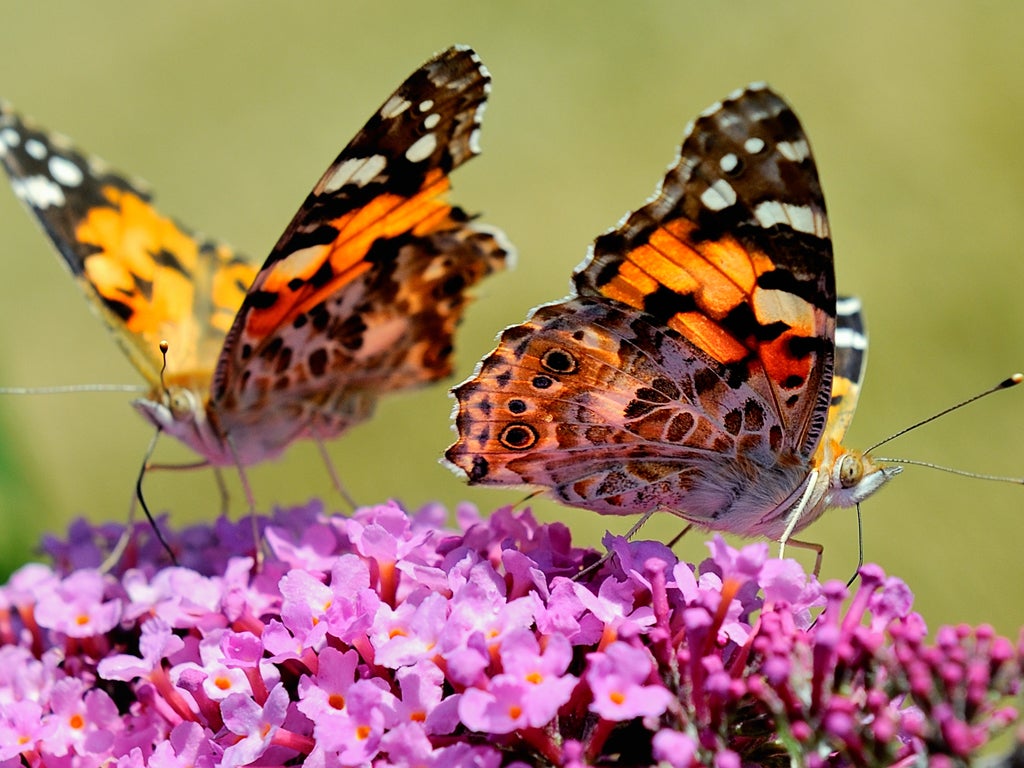A late summer marvel - the mysterious butterfly bush
Its long, vibrant flower sprays lure lepidoptera like nothing else

The idea that plants can have remarkable powers has faded these days, so far have we travelled from our roots in the natural world, but in the past it was a commonplace: the ability of powdered willow bark, for example, to relieve fevers was known for thousands of years before its active ingredient was synthesised as aspirin.
Many plants possess such healing potential, while conversely there are many which can be used as deadly poisons; and there are plants known for their mind-altering properties, such as peyote and Jimson weed in the Americas; but in modern industrial societies we tend to have lost sight of them all, and look upon plants merely as background vegetation.
Yet there is one plant, in flower right now, whose extraordinary powers are unmistakably visible even in 21st-century suburban gardens, and this is the shrub Buddleia davidii, discovered in the mountains of China in 1869 by the French Jesuit and naturalist Père David (who introduced to Europe, among much other exotic wildlife, the first giant panda).
Buddleia is the butterfly bush. Its long, vibrantly coloured flower sprays lure lepidoptera like nothing else, drawing the bright, winged creatures away from every other bloom, and I have been gripped by this circumstance since the age of seven, when I first came across a buddleia crawling with butterflies in a neighbour’s garden.
Ever since then I have never been able to pass a buddleia bush, anywhere, without an inner thrill, and this lifelong attraction came to a climax this week when I visited the national buddleia collection, which is kept at Longstock Park Nursery, on the Leckford estate near Stockbridge, in the Test Valley in Hampshire.
It is exquisite: a 100yd-long flower bed in a walled garden containing about 140 different buddleias, made up principally of about 40 different buddleia species – separate species are found in the wild all around the globe – and nearly 70 cultivars, or specially bred varieties, of Buddleia davidii itself, in colours from sky blue to pink, from pure white to deep purple.
It was fizzing with butterflies; in fact, I have never in my life seen so many British butterflies together in once place. There were small tortoiseshells, peacocks and red admirals by the score, interspersed with painted ladies, large whites and small whites, as well as newly hatched brimstones, the females silky white, the males intense lemon yellow, plus meadow browns, and for good measure, a solitary dark green fritillary. There were so many that you had to avoid stepping on them as they basked in the sunshine, wings open, on the path – while the spectacular herbaceous border against the brick-and-flint wall on the garden’s opposite side, itself 100 yards long and full of striking colour, was virtually empty of butterflies.
It’s clear that buddleia’s strong scent, honey-sweet with just a hint of a sour edge, must carry a long way, and the flowers are nectar-rich, but the man who cares for and showed me the national collection, Peter Moore, admitted that the precise power of attraction which made butterflies prefer buddleia above all, was a mystery to him.
Little else about the plant is. He is a celebrated plant-breeder – you can see examples of his creations on his website, bredbypetermoore.co.uk – and he has bred nine buddleia cultivars and hybrids, with more in the pipeline. It’s his love for the plants which keeps the collection in such fantastic nick, and even if you’re only a butterfly-indifferent gardener – for shame! – the mere sight of the Longstock buddleias will take your breath away.
Buddleia is a late summer plant, flowering from mid-July to September. It’s at its peak right now, with the grass turning brown and the thistledown drifting through the warm afternoons. Go to Longstock and witness its mysterious power over our most beautiful insects.
Peter Moore doesn’t know what it is. I don’t know what it is. But it is astounding, and you mustn’t miss it.
Join our commenting forum
Join thought-provoking conversations, follow other Independent readers and see their replies
Comments